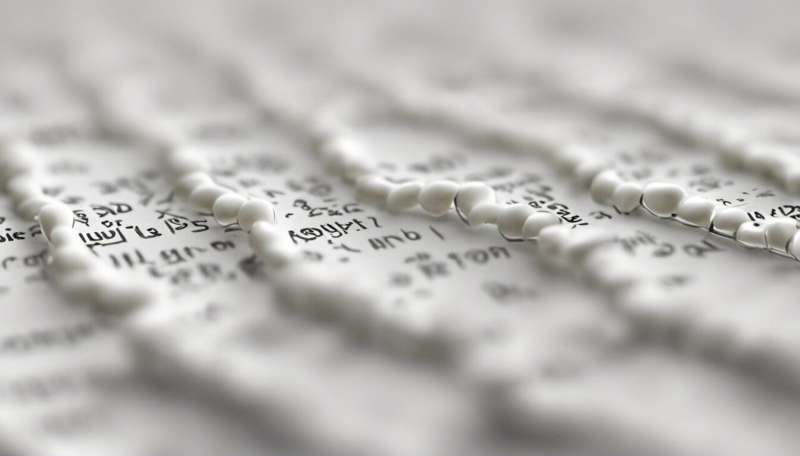Credit: AI-generated image (disclaimer)
Just a few weeks after Elon Musk completed his chaotic buyout of Twitter, a phony account posing as pharmaceutical company Eli Lilly—with the Twitter handle @EliLillyandCo, a "verified" blue checkmark and the company logo—tweeted: "We are excited to announce insulin is free now."
The tweet went viral, as did the outrage directed at the company over the price of insulin—which is, of course, not free.
More than 37 million Americans have diabetes—one in ten people. Approximately 9.3 million Americans take insulin to manage their condition. It's a lifesaver for millions of people. And yet, the drug's list price more than doubled between 2012 and 2019.
To understand how we got here, we turned to USC Price School professors and fellows with the USC Schaeffer Center Neeraj Sood and Karen Van Nuys, who have spent years untangling the cost of insulin. They shared five takeaways from their research (also coauthored by Rocio Ribero and Martha Ryan) published last year in JAMA Health Forum.
1. Insulin list prices have been increasing, but that's not what most patients pay.
Van Nuys: The list price of a drug is like the sticker price on a car. It's not necessarily what you pay. Patients with health insurance typically pay a copay or a percentage, rather than the full list price, for insulin. Other entities in the supply chain, like pharmacy benefit managers or health plans, also don't pay the full price because manufacturers give them all sorts of concessions, rebates and discounts. As a result, list price is not a good measure of what we are actually spending on insulin.
Sood: But that doesn't mean patients are unharmed by this. In fact, our research shows that higher list prices do harm patients, either through higher coinsurance or through higher net costs and rising premiums. Some patients try to stretch their supplies of insulin, and some have died.
2. What manufacturers take home has been decreasing.
Van Nuys: What insulin manufacturers were paid declined precipitously during the time period (2014–2018) that we analyzed. We found that in 2014 manufacturers were taking home 70% of what is spent on insulin; just four years later they received 47%.
What that means is that somebody has been successful in negotiating concessions from manufacturers, and that those concessions have been increasing.
3. What is paid for insulin from all sources has been remarkably stable over recent years.
Van Nuys: Everyone thinks that insulin is getting more expensive over time. That's because what's in the news is the list price—which is publicly available. There are other measures that better reflect what is actually being paid for insulin, but these are hidden and can only be sort of teased out by triangulating from multiple disparate sources, which is basically how we did our paper. That information hasn't been as available, for example, for Sen. Bernie Sanders and other policymakers concerned about the price of insulin.
Sood: The fact that total expenditures on insulin, that is, the total amount paid to manufacturers and supply chain participants, have in fact been so stable means that those concessions have not been used to lower what we pay for insulin; they've been going someplace else. It's not going to manufacturers. It's not going to patients. Somebody else is getting that money and our research suggests that it's these middlemen: wholesalers, pharmacies and pharmacy benefit managers (PBMs).
4. What middlemen have been taking home has been increasing.
Sood: The share of insulin expenditures going to middlemen increased markedly during the period we studied. In 2014, these intermediaries accounted for 30% of expenditures. By 2018 their share had increased to 53%.
I was recently asked by a reporter for the Wall Street Journal: Why doesn't Bernie Sanders understand this point? I think the answer is, this is really complicated.
Van Nuys: This is not easy stuff. It took us two-and-a-half years to write our paper because everything about insulin expenditures is so buried.
To put it another way, all the concessions that manufacturers have been giving are getting sucked up by the supply chain, rather than being passed through to patients. If the supply chain players were content to earn what they were earning in 2014, we would see lower total insulin expenditures. But instead the supply chain has acted like a sponge, soaking up the concessions they have been wringing out of manufacturers and keeping them for themselves.
5. By 2018, middlemen were pocketing more than half of what we spend on insulin.
Sood: Patients and their advocates should ask why it is that the people who distribute insulin, like PBMs and pharmacies, get more than half of the money spent by consumers, and why they should be earning more over time. Since 2018, there has been a string of vertical mergers where PBMs have merged with large insurers, which has further consolidated their market power.
Van Nuys: The bottom line is policymakers who want to control insulin costs should consider entities throughout the insulin distribution system. Policymakers and the public alike have been focused on drug manufacturers—look no further than the anger directed at Eli Lilly, and at the drug-pricing language in the recent Inflation Reduction Act—but we believe a more effective approach is to target what is going to the intermediaries in the drug distribution system. One positive development is that this past June, the Federal Trade Commission opened an investigation into the six largest PBMs. It's long overdue.
Journal information: JAMA Health Forum
Provided by University of Southern California






















